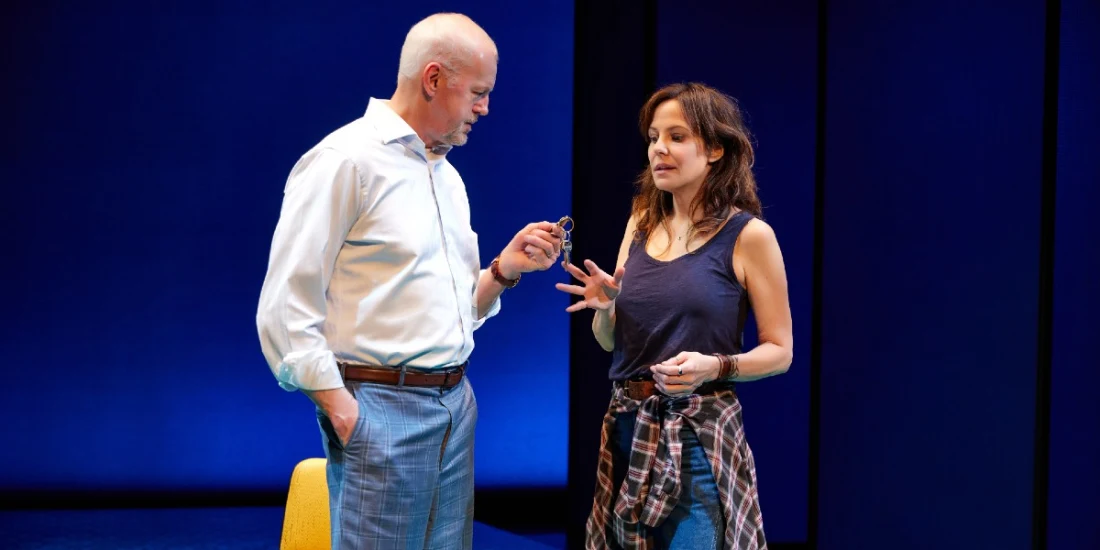'How I Learned to Drive' review — a triggering ride down memory lane
How does one stage a traumatizing play that focuses on grooming, pedophilia, misogyny, and incest? In the case of Paula Vogel's Pulitzer Prize-winning play How I Learned to Drive, which just premiered on Broadway at the Samuel J. Friedman Theatre, Mark Brokaw has opted to direct the most painful moments with a "folks say the wackiest things" shrug.
That incongruously lighthearted approach magnifies How I Learned to Drive's horror without investing the words with greater meaning. And what words they are. Vogel has arranged the story of Li'l Bit (Mary-Louise Parker) as a set of non-chronological flashbacks that show the audience how she became a shiftless vagabond who only feels alive when she is driving full pedal to medal.
Each blip in her life is named for a chapter in an instructional guide for driving a car, with brief interludes devoted to other lessons such as drinking like a lady, all announced by the play's Greek chorus. They also play Li'l Bit's family members, who take their names from their genitalia. Her sobriquet references how tiny her vagina was when she was born, while her lecherous grandfather Big Papa (Chris Meyers, as the male Greek chorus) is named not for his height but for the size of his penis.
Li'l Bit is raised by her single mother (Johanna Day, as the female Greek chorus), grandmother (Alyssa May Gold, as the teenage Greek chorus), and Uncle Peck (David Morse). Peck lavishes her with all the attention and encouragement that her family refuses to pay her. Rather than lift up her brilliant mind, the rest bitterly squash her in antiquated ideas about a woman's place: on her back or in the kitchen.
Though Peck's attention lifts her up, the price she bears for his favor is inappropriate touches and grinds, as well as requests for sexually charged photo sessions. Like many groomers, Peck frames his requests around choice; he will not do anything unless Li'l Bit wants him to, though he constantly coaxes, isolates, and positions her until there is no other alternative. Though her family is aware of what is going on, they stay silent and blame Li'l Bit for making it happen. As her aunt (also played by Day) insists, she is not as innocent as she looks and certainly knows what she is doing.
What helps to protect the audience from feeling overwhelmed by these malicious characters is watching Parker assay the role in all of her incarnations, from gawky teenager to unmoored adult. Vogel has wisely placed the adult version of Li'l Bit in the body of her younger self; watching a child navigate these traps would be too cruel. That is, until the very end, when Gold embodies Li'l Bit as she suffers her first assault.
Dressed in Dede Ayite's yellow sundress ― which perfectly encapsulates the first budding on a flower ― Gold looks as if she were no more than 11 years old. Her tears soil her dress as she quietly asks Peck to stop. Her plea grows into a howl that reverberates throughout the entire play. It is both her first driving lesson and the gaping wound that festers in her soul for her entire life.
In writing How I Learned to Drive, Vogel has shifted the focus from sexual predators, such as Humbert Humbert in Vladimir Navokov's Lolita, to their survivors. Though the text is painful and unsparing, it does not feel pornographic. Rather, it reveals the fear of all survivors: that they will never escape the room where they were violated.
On the page, How I Learned to Drive handles this beautifully, but by staging this Manhattan Theatre Club revival as a comedy, Brokaw not only increases its horror, but he also triggers those who have already processed their trauma. While watching, I frequently felt suffocated and dragged back into the circumstances of my own childhood rapes. Though the physical staging avoids explicit manifestations of abuse, seeing characters rendered as daffy caricatures indicated to me the pain was one laugh away from consuming me whole.
Drive ends with Li'l Bit waving goodbye to the memory of her uncle. Though she eventually drives off, this production has left me feeling as if I am still crying in my seat. While that is a testament to its power, it is also a warning to all who have survived such abuse.
Photo credit: David Morse and Mary-Louise Parker in How I Learned to Drive. (Photo by Jeremy Daniel)
Originally published on
